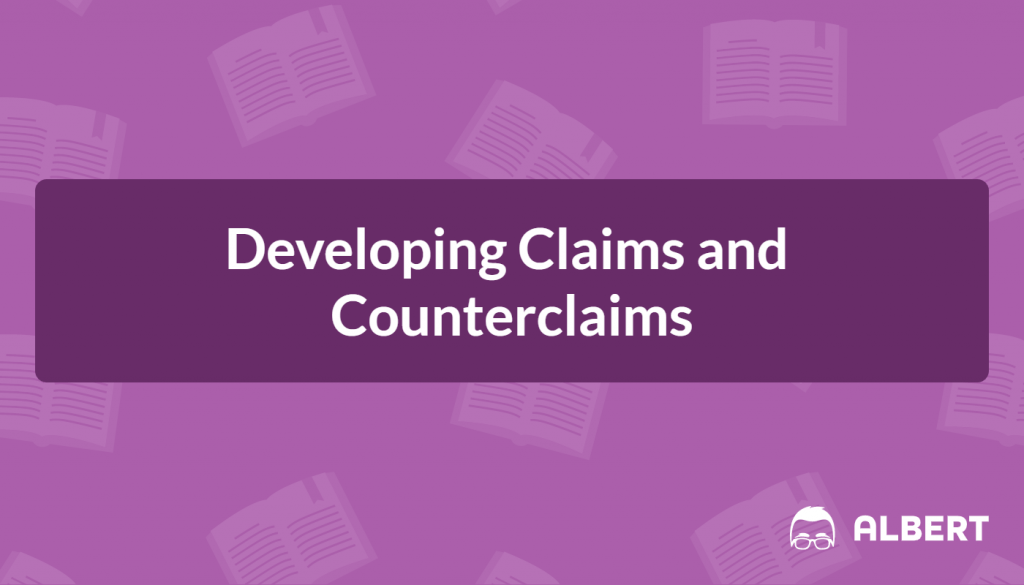What We Review
Introduction
When you’re diving into a persuasive speech, article, or essay, there are two key things to look out for: the claim and the counterclaim. The claim is basically what the author believes and wants you to agree with. It’s their main point or argument about a topic. On the flip side, the counterclaim is the opposite stance. It’s a position that challenges or disagrees with the author’s claim.
Getting a grip on both claims and counterclaims is super important. Why? Because it helps you become more savvy when you read different nonfiction texts. You’ll be able to spot what the writer is arguing for (the claim) and what arguments might go against it (the counterclaim). Plus, it’s a great skill for when you start making your own arguments in essays or discussions. Understanding both sides of a topic makes your own arguments stronger and more balanced.
Understanding Claims
A claim is what the author or speaker is trying to convince you of, their main point or argument. But it’s not enough just to state a claim; it needs to be backed up with solid evidence and also be ready to face counterclaims (which are basically the opposite arguments).
There are different types of claims, and knowing them can help you understand and make better arguments:
- Fact: This type of claim focuses on answering questions such as, “is it true,” “did it happen,” or “who is this person?”. For example, a sample fact claim could be: “Lebron James’ I Promise School in Akron, OH provides an effective model for meeting students’ needs on educational, physical, emotional, and social levels.”
- Definition: This type of claim focuses on answering questions such as, “what does this term mean in this context?” For example, a sample definition claim could be: “Being someone’s friend on social media has an entirely different meaning than being in a real-life friendship.”
- Value: This type of claim focuses on answering questions such as, “is this good or bad?” or “how do we define what is good or what is bad?” For example, a sample value claim could be: “Cell phones should not be allowed in high school because these devices detract from student performance and affect students’ emotional well-being.”
- Cause: This type of claim answers questions such as, “what is the cause?” and “what is the effect?” For example, a sample cause claim could be: “By reintroducing home economics classes into high school curriculum, students will be more prepared for adult responsibilities and less dependent on their parents after they graduate high school.”
- Comparison: This type of claim answers questions such as, “what can we learn from comparing these two topics?” For example, a comparison claim could be: “When placed side-by-side, Marvel and DC comic book universes reveal much closer similarities between one another than one would expect.”
- Policy: This type of claim answers questions such as, “what type of policies would benefit this group?” or “how should various policies be enforced in different circumstances?” For example, a policy claim could be: “Employers must provide new mothers with one year of paid leave with a guarantee of employment following this period of absence.”

No matter how strong a claim sounds, it must have a firm foundation. Otherwise, it is easily toppled by opposing counterclaims. The foundation of an effective claim is sufficient and relevant supporting evidence. Be sure to include the rebuttal of counterclaims with further supporting evidence. Sufficient supporting evidence means the writer has enough evidence to support their claim. But be careful – too much information can make your main point hard to see. And always be ready to address counterclaims with more evidence. This makes your argument stronger and shows you’ve thought about all sides of the issue.
Developing Counterclaims
A counterclaim is an opposing argument that seeks to disprove or weaken another claim.
Just like there are many different kinds of claims, there are just as many variations of counterclaims. For example, if someone wanted to counter the “Fact Claim” above, “Lebron James’ I Promise School in Akron, OH provides an effective model for meeting students’ needs on educational, physical, emotional, and social levels,” they would use sufficient and relevant evidence to argue that “Lebron James’ I Promise School in Akron, OH does not provide an effective model for meeting students’ needs on educational, physical, emotional, and social levels.”

Dealing with different viewpoints, especially on sensitive topics, can be tough. It’s not always easy to listen to opinions that go against what you believe. But here’s the thing – understanding and considering these opposing perspectives can actually make your own argument stronger. It shows that you’re open-minded and have thought about the issue from all angles. Plus, it teaches a valuable lesson: it’s totally okay to agree to disagree. Not everyone will see things the way you do, and that’s alright. In the world of persuasive writing and speaking, being able to develop and understand counterclaims is a key skill that can really take your arguments to the next level.
Conclusion
In school, you might practice making claims and counterclaims on topics that don’t seem super important to you. But as you grow and start forming your own strong opinions on different subjects, you’ll see how this skill really comes into play in the real world.
One thing you’ll learn is that introducing opposite opinions can sometimes lead to disagreements or conflicts. That’s just part of life. But here’s the key: to be a really good communicator, whether in your personal life or in the workplace, it’s important to know how to peacefully coexist with people who have different views.

Understanding how to discuss and debate ideas respectfully is a super valuable skill. It helps you express your own thoughts clearly while also being open to hearing what others have to say. This doesn’t mean you have to change your opinions, but being able to consider different perspectives can make you a more thoughtful and well-rounded thinker. So, as you continue to shape your views on various topics, remember that being able to agree to disagree is a part of growing into a skilled and respectful communicator.
Practice Makes Perfect
In addition to the recommended activities above, Albert provides a wide range of texts for students to analyze and interpret. For emerging readers, check out our Short Readings course, which uses short passages to reinforce fundamental reading skills. Readers at all ability levels may enjoy our Leveled Readings course. It offers Lexile® leveled passages focused on a unifying essential question. This allows you to keep all students on the same page regardless of reading level. Learn more about the Lexile Framework here!
For authentic practice, check out our Essential Readings in Literature course. This course provides an overview of the core texts that American students often read in English class. Each text is broken down by skill, ensuring that students approach their reading from every angle.
With our easy-to-use interface and informative feedback, Albert.io is the perfect tool for reinforcing close reading skills and helping students develop a deeper understanding of the texts they encounter.








